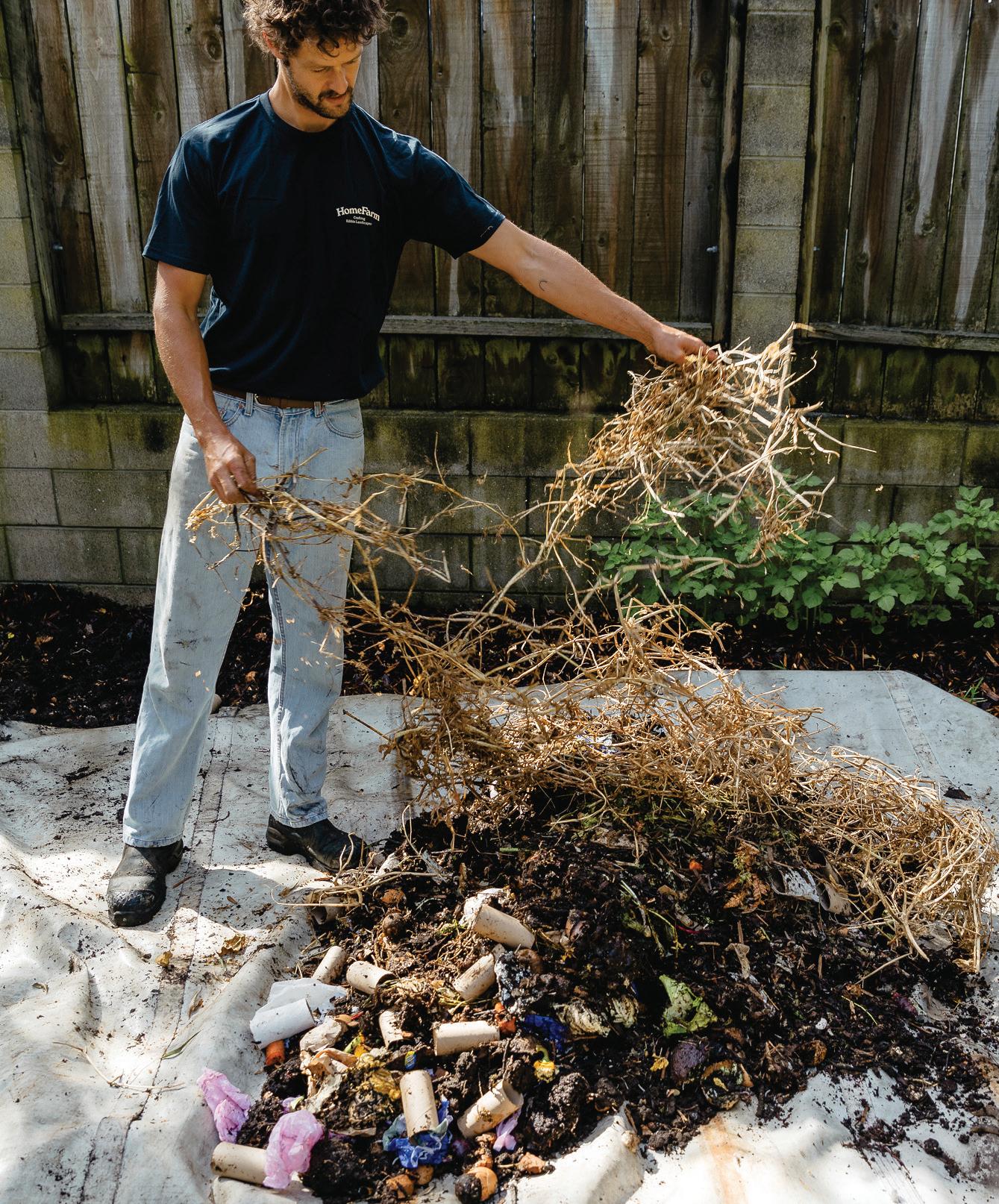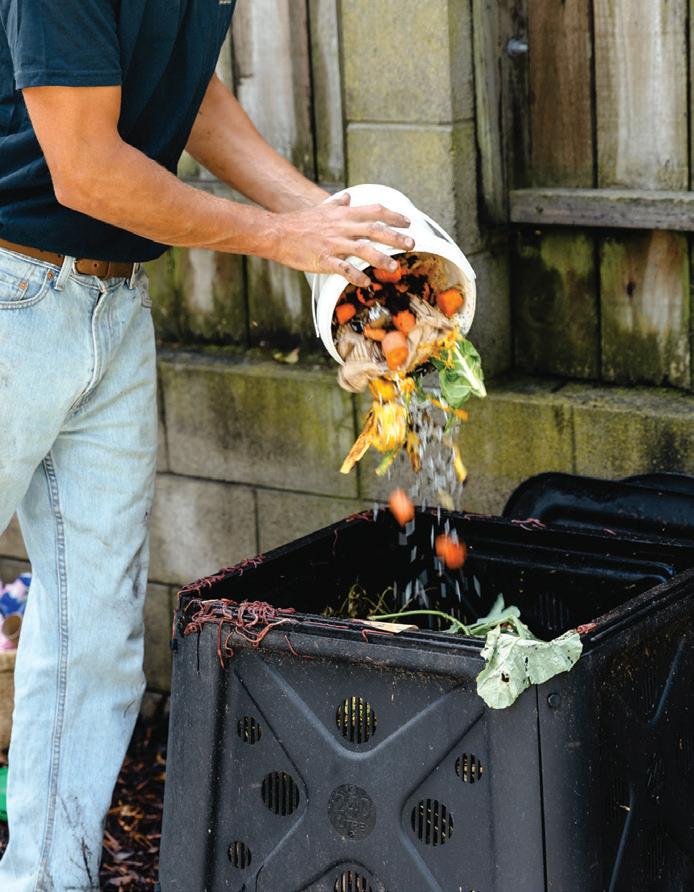
3 minute read
A Fine Balance
By Jim Annear Photography by ilk
I have a little white bucket with a green lid. It lives underneath our kitchen sink and I’m always happy to see it. It’s that one bin where the contents don’t leave our home. It’s the bin that helps me feed the soil in which our delicious home produce grows.
Advertisement
To me, throwing out compostable material is down right outrageous! Especially the stuff I paid good money for. Turning compostable material into nutritious food for healthy plants is a no brainer, and now I’ve learnt how to do it, I can’t stop! I love it! So I am going to share how I do it — if you aren’t composting already, you’ll see that it’s not hard. More often than not, when I visit someone’s home, I’ll come across a black bin in some forgotten corner of the backyard, full of grass clippings. It makes me wonder how many homes aren’t using these bins to their full potential. Home composting makes so much sense in terms of maximising your investments of time, energy and of course money, so it seems silly to not get the most out of it.
I’ve been successfully composting at home for around five years now, but still feel like I’ve only just started because it’s just as fun and interesting as it was when I made my first batch of proper compost. I couldn’t believe that that batch worked! I was truly amazed that six months of food and garden ‘waste’ had been magically transformed into this lush, deep brown, forest-smelling material. And to then put that on the garden and grow plants from it is such a great feeling. And the best part is, I didn’t do that much.
I am a self proclaimed lazy gardener, I don’t wanna work too hard, I just want to have a good time, whatever I’m doing. I came to learn that composting or rather decomposition, happens naturally and that once you start, help comes naturally too — and in numbers! I learnt that most of the work is done by worms, bugs, micro-organisms, bacteria and fungi. A whole army of little creatures show up to help process all this material that we humans commonly regard as waste and throw away to landfill.
My home set up
Our compost bin is one of those classic Kiwi black bins mentioned above — it’s 240L and we fill it up in around 3–6 months. We have ours in a shady position under a tree. I’ve found that if the bin gets too hot and the material inside dries out, then the composting process slows down and can even completely stop.
As this style of bin has an open bottom, the materials have direct contact with the ground. Situating the bin underneath a tree means the biology around the tree’s root system, and the roots themselves, have direct access to the decomposing materials and resulting nutrients. This is also where a lot of the composting help comes from — in the form of those worms, micro-organisms, and the good bacteria and fungi. When setting it up, I like to put a fine wire mesh down underneath the bin to prevent rodents from entering this composting zone. There are two parts to my composting process: filling the bin and the composting stage. Let’s dive in...
What can be composted?
There are two main sources of materials for our compost bin. First up, we add the contents of that little white bucket with the green lid that lives under our sink. It captures compostable materials from the kitchen and house:
House compostables
→ Cooked and raw plant-based meals and ingredients
→ Coffee and tea
→ Egg shells and torn-up egg cartons
→ Old flowers from vases
→ Toilet rolls and paper wrapping
→ Scrunched up newspapers and envelopes
→ Tissues
→ Hair from haircuts/brushes
I’ve left out meat and dairy as you can run into problems trying to home compost these things, but that’s not to say there isn’t a way of processing them. Google ‘bokashi composting’ to learn how to safely navigate home composting these materials.
The other source of material is from outside, things you can just chuck straight into your bin:
Outside compostables
→ Fruit and vegetable plants
→ Chopped up tree prunings
→ Fallen leaves, twigs and fruit
→ Weeds without seeds
This page, top to bottom: Good compost consists of about 50% wet ingredients, such as food, and 50% dry, such as cardboard and wood chips; fruit and vege scraps are ideal to compost; wire mesh under your compost bin keeps rodents at bay.


Opener: Jim adds dry material to his compost heap to get the balance right.

→ Use your food and garden waste to create a rich compost that’ll help you grow more nutritious food.










